One of the most important parts of good lawn care is fertilising, which supplies vital nourishment that supports exuberant growth and rich colours. But too much fertilizer application – generally called over-fertilization – can be dangerous to your lawn. An excess of fertilizers results in imbalanced nutrients, as well as various other undesirable effects such as root scorching, increased susceptibility to diseases, nutrient runoff with environmental consequences. This text will analyze what over-fertilization entails, why it is harmful and suggest practical ways to remedy it in order to achieve a balanced yard. With this understanding, homeowners are now in a position to make better choices about their lawns avoiding the traps associated with excessive use of fertilizers.
What Happens When You Over-Fertilize Your Lawn?
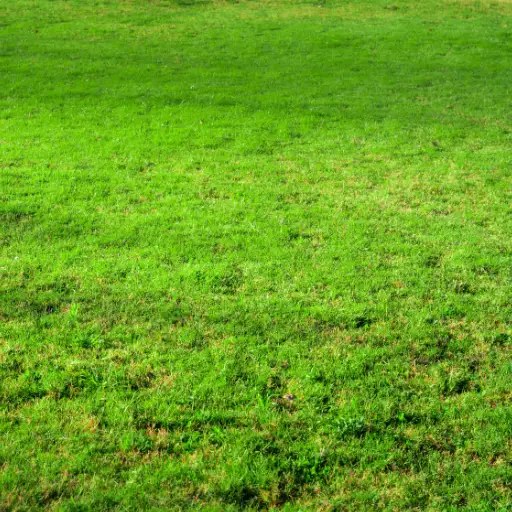
In case of over-fertilization, excess nitrogen in the fertilizer causes dehydration and cell damage at the roots, the browning or yellowing of the grass blades, which is also called leaf scorch or root burn. Over-fertilized soils have increased levels of nitrogen, which draw out moisture, causing dehydration and killing cells near the roots. Additionally, too much manure affects soil pH balance, causing diseases and pests in grass by reducing its nutrient content. Moreover, when people apply more fertilizers than what their lawns really need, some nutrients can leach into nearby waters causing environmental problems such as high levels of phosphorus and nitrogen in water bodies which results to harmful algal blooms with resultant aquatic ecosystem disruptions.
Signs of Over-Fertilized Lawn: Yellow or Brown Grass
Excessive nitrogen content is a common sign of over-fertilized lawns that leads to yellow grass as well as leaf scorching. This can be determined quantitatively through soil testing where elevated nitrate concentrations exceed 40 ppm (parts per million). When excessively supplied with N, plants turn yellow or brown due to loss of turgidity occasioned by dehydration effect. Besides, nutrient availability issues may be worsened by an imbalanced soil pH that frequently shifts towards alkaline or acidic conditions away from the optimum range for pH between 6.0-7.0. In unbalanced pH conditions, iron and manganese take longer to get absorbed into the body, thus rendering grass more discolored than ever before. The above-mentioned adverse impacts brought about by over-fertilization are reversible if one keeps constant checks within these parameters while making necessary adjustments.
Symptoms of Fertilizer Burn
Fertilizer burn is one of the symptoms that are displayed due to excessive use of fertilizers. Dry fragile grass blades can be seen as a sign for this condition, which if touched easily crumbles coupled with severe dehydration at cellular level. The other aspect is that it tends to cause distinct changes in texture; and discoloration becomes more pronounced with areas turning yellow or brown as if they have scorched from high levels of nitrogen. This could occur when soil tests indicate nitrate levels above 40 ppm and an electrical conductivity (EC) beyond 2.0 dS/m (decisiemens per meter); indicating high concentrations of salts that are harmful to plants. When there is an excessive amount of fertilizer salt, water will move away from the roots towards the atmosphere through osmosis, even when there is enough moisture in the soil thus giving rise to physiological drought. Consequently, certain portions may end up as dead plants with poor growth caused by imbalances in localized nutrients or the presence of acidic soils deviating from their recommended range between pH 6 -7 resulting very low or too much micro elements as well.The only way to deal with these problems is by adjusting fertilization practices accordingly such that EC remains within acceptable limits.
Impact of Excess Fertilizer on Soil and New Grass
Excess fertilizer changes the composition of soil significantly, which has long-term effects on both soil health and the development of new grasses. In case there are too many fertilizers applied, then there will be a high level of salts being introduced into the earth’s surface that raise electrical conductivity above 2 dS/m. This increased salinity disrupts osmotic equilibrium, leading to water moving outwards away from root zones instead of being absorbed, hence resembling conditions associated with droughts. For example, newly planted grass seedlings have small root systems; hence, they could easily die off since they cannot obtain enough moisture from the surroundings. When too much nitrate is provided, nitrates can be lost from the soil, leading to nutrient imbalances that lower seedling vigor and hinder proper root formation. Also, changes in pH due to fertilizers block nutrients like iron or zinc, making them unavailable; hence, getting out of range in terms of pH 6 -7 results in micro-nutrient deficiencies and excesses. This can only be corrected by regularly testing the soil for EC and nutrient levels, adjusting fertilization rates appropriately, and practices such as leaching out salts beyond crop uptake capacity and using slow-release fertilizer.
How to Fix an Over-Fertilized Lawn?
Stop extra use of fertilizer to remediate an over-fertilized lawn. The next important tip is to water thoroughly so as to wash away excess salts. Administer deep watering, making sure that the soil is saturated with water up to at least 6 inches deep so that dilution and leaching of accumulated nutrients can take place. Do this for several days, repeating as necessary in order to gradually decrease soil salinity. Until grass begins bouncing back into shape, don’t mow your lawn to reduce stress on it. It’s also possible to apply small amounts of slow-release fertilizers which are well balanced on a regular basis, helping restore nutrients while further damage is prevented from occurring. Finally, keep checking the ground conditions through continuous testing and make changes where necessary in line with good practices for a healthy and resilient yard.
How To Remedy Over-Fertilization: Rake And Remove
When addressing the issue of over-fertilization, one must start by raking and removing any visible excessive fertilize that remains on the surface of the lawn area. This step eliminates most surplus nutrient thus preventing adverse effects they cause to untreated grasses. Use leaf rake or alike equipment gently collects granules or fertilizer patches without affecting turf. By doing this initial removal process, it helps reduce immediate effects on the lawn hence making it ready for other remedies such as flushing out remaining salts by plenty of water and performing other measures aimed at promoting grass recovery.
Watering Techniques Used To Dilute Excess Fertilizer
For purposes of effectively diminishing excessive nitrogen by means of watering techniques, there is need for meticulous plan that will ensure optimal soil rehabilitation takes place.This technique starts with carrying out deep watering whereby all soils are filled up to about six inches below surface level.This depth comes into play because it facilitates nutrient beyond root zone thus reduced plant stress due accumulated salts and nutrients.The amount varies depending on the kind of soil, sandy soils consuming less than clayey ones due to high permeability.
Experts propose a multiple-day watering program to dilute the solution gradually. For instance, you may choose to water heavily for half an hour per day for about three or four days. This method allows water to penetrate deeply and slowly mitigate the concentration of excess manure.
Moreover, the use of soil moisture meters assists in checking moisture levels to prevent over-saturation that causes root rotting. The best period for watering is when it is cool due to reduced evaporation rates leading to optimum absorption into soil from grass root tissues. By constant monitoring and adjusting water periods basing on both soil and grass growth response, this can be achieved in a controlled manner hence reducing excessive fertilizer levels in your lawn effectively.
Soil Test Application and Lawn Care Professionals’ Recommendation
One important step in managing excess fertilizer and its impact on the environment is conducting a soil test to provide an inclusive assessment of the nutrient levels, pH level, and overall composition of the soil. The process of acquiring accurate results involves taking multiple samples from different locations within your lawn and combining them for wider representation. For more detailed results it is better to use a soil testing kit or to send away samples for analysis at a certified laboratory. Typical parameters tested on a soil sample include nitrogen (N), phosphorus (P), potassium (K) levels, pH value, and presence of other micronutrients like iron, manganese and zinc.
Lawn care professionals can also offer advice on how to amend soil conditions based on these tests. For example, if soils are highly acidic with a pH less than 6.0, lime can be applied to neutralize this acidity. Conversely, if alkalinity is too high in the soil with a pH above 7.5, sulfur compounds may be recommended. Additionally, specialists may recommend specific fertilizers, organic matter, or soil conditioners if nutrients are imbalanced.
For those experiencing nutrient leaching due to heavy watering, adding organic mulch or compost increases water holding capacity by improving soil structure hence preventing subsequent loss of nutrients. Regularly aerated soils enhance root growth and nutrient uptake efficiency as so proposed by experts. By implementing these practices according to professional recommendations as well as outcomes from soil tests will lead efficiently toward proper lawn health management and recovery following excessive application of fertilizers
Understanding the Right Amount of Fertilizer for Your Lawn
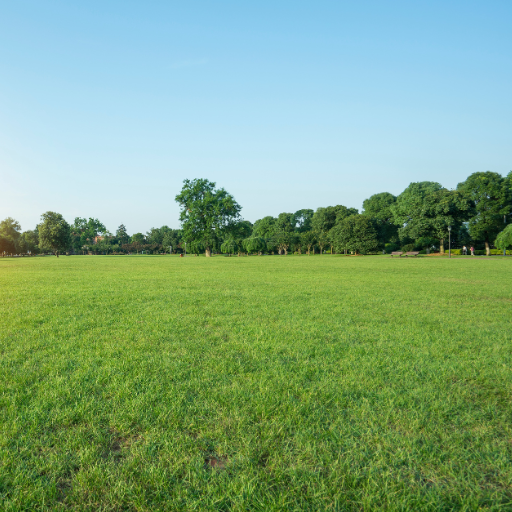
Determining the exact amount of fertilizers for your lawn is predicated on several factors. Initially, you should be aware of the kind of grass in your lawn because different types require different amounts of nutrients. For example, cool-season grasses such as Kentucky bluegrass need more nitrogen than warm-season grasses like Bermuda grass do. Moreover, how big your land goes matters; actually get an accurate measurement of the extent of your compound and use it to calculate the specific amount of fertilizer needed (usually measured in pounds per 1,000 square feet).
The results from soil tests form the basis for determining what kind or quantities to apply in gardens. For example, where a soil test reveals low levels of nitrogen, phosphorus or potassium, select a fertilizer that can provide these deficiencies. Moreover, when to apply it and how frequently are also significant considerations; typically lawns benefit most from fertilization during their peak growing seasons when nutrient uptake efficiency is highest because there are more nutrients available for absorption by plants.
Finally, balanced fertilization must be employed to ensure that we do not over-fertilize our lawns. Overuse can cause fertilizer runoff into water bodies resulting in environmental damage besides destroying our turf. Again slow release fertilizers help in supplying nutrients steadily without burning the grass. By paying attention to these guidelines – taking into account grass type, size garden and timing application correctly based on soil test – a good looking and healthy ground is maintained while dangers associated with over-fertilization will be minimized at all times.
Determining the Right Amount of Fertilizer for Your Lawn
The right amount of fertilizer to apply to your lawn depends on several factors such as grass type, soil conditions, and climate. However, using excessive amounts can result in serious problems. Over-application commonly leads to high nitrogen levels that cause rapid but weak growth susceptible to diseases and pests. It may also disrupt nutrient balance, causing a shortage of other important minerals. Moreover, excess fertilizers are washed off into nearby water bodies leading to eutrophication through algal blooms and pollution of the environment. Crucial here is adherence to recommended application rates which usually stands at around 1 pound nitrogen per 1,000 square feet per application together with accounting for any additional nutrients already available in the soil from previous treatments or natural sources. Regular use of soil tests enables precise determination of the exact fertilizer requirements thus preventing overuse.
Determining the Best Lawn Fertilizer for Your Grass Type
The best lawn fertilizer for your grass type heavily relies on its individual needs while others need just a little push such as sun exposure or soil composition.. Cool season grasses such as Kentucky bluegrass and fescue require fertilizers with higher amounts of nitrogen particularly during fall and spring when they grow best. On contrary, warm season grasses like Bermuda and St Augustine prefer fertilizers that have a balanced nutrient ratio applied mostly during late spring and summer seasons. Consideration should also be given to Soil pH and other nutrient deficiencies detected through soil testing done previously performed on site (Pepper & Thomas, 2008). Slow-release formulas are the most preferred due to their ability to provide a steady release of nutrients over time, thereby minimizing chances for leakage or damage to the environment (Snyder et al., 2016). Equally important is compliance with application guidelines and environmental concerns like proximity to water bodies and susceptibility to run-off.
Importance of Nitrogen, Potassium, PH Balance
Maintaining an optimum balance of nitrogen (N), Potassium (K), and phosphorus (P) is an essential requirement for lawn fertilization in order to achieve the best growth and health of grass. For instance, Nitrogen is vital for maintaining green foliage that is lush and healthy; hence it is viewed as the most important nutrient in lawn care. It plays a role in the production of chlorophyll which enables photosynthesis.. The recommended nitrogen rate for cool-season grasses ranges between 2-4 lbs N/1,000 sq ft/year while warm-season grasses need about 1-3 pounds.
Phosphorus on the other hand aids in root development as well as energy transfer within grass plants. This is particularly important during establishment of new lawns or early growth stage. Normally, phosphorus requirements are much lower with application rates ranging from 0.5-1 pound P/1000 square feet per year depending on soil tests and local rules.
Potassium, an essential element for general plant health and stress resistance including drought tolerance, diseases and cold snaps help regulate water movement within plants.. The suggested annual potassium rates are usually about 1-2 pounds K/1000 sq ft based on soil test recommendations.
Maintaining an accurate N-P-K ratio through careful applications and routine soil testing ensures balanced nutrition for the grass thus promoting a strong sustainable ecosystem.
Can Over-Fertilizing a Lawn Lead to Dead Grass?
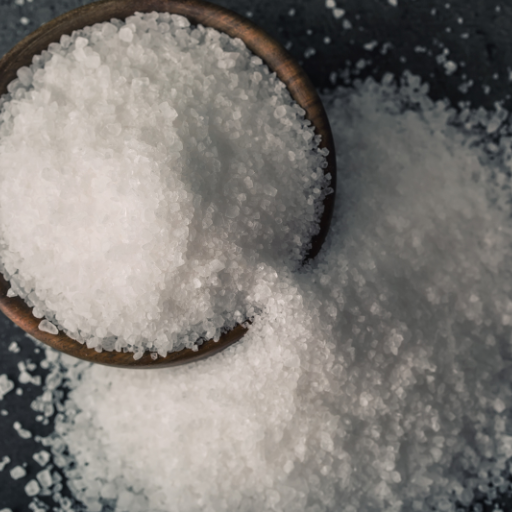
Dead grass can be caused by an overdose of fertilizer in a lawn. Many times, there is excessive use of fertilizers such as nitrogen leading to the situation called “fertilizer burn”. This is the condition where fertilizer with high salt content draws away moisture from the root of the grass and cause dehydration which results into death of the gramineous leaf. Otherwise, when excess nutrients are added to soil, it will surely change its pH making it become unsuitable for normal grasses and other beneficial microorganisms. In addition over-fertilization enhances the growth rate beyond what grass can sustain thus weakening it and making it more prone to diseases and pests. Thus, recommended application rates should be strictly followed while doing soil tests to determine nutrient needs for your lawn are also necessary.
Why Excessive Fertilizing Can Destroy Your Yard
High rates of fertilization, particularly with nitrogenous products, can have various damaging effects on the lawn. Nitrogen when over-applied results to an imbalance in osmosis in the soil. This leads to dehydration since water is moved out of the roots of grasses to equalize the concentration difference brought about by such a stress through osmosis. According to Agriculture and Natural Resources from the University of California, indications of excess nitrogen include burnt patches and yellowing leaves.
Furthermore, over-fertilization disturbs soil’s ecological balance as stated by North Carolina Cooperative Extension. High nutrient levels may foster development of thatch – a dense layer of organic matter that accumulates between the soil and blades thus hindering infiltration and promoting susceptibility to fungal diseases. For instance, high phosphorus levels can result in iron deficiencies which are manifested as chlorosis.
Finally, using excessive quantities of fertilizers increases chances for nutrient runoff into water bodies leading to environmental problems like algal bloom (Environmental Protection Agency). The EPA cautions that these risks be minimized by following prescribed application rates and timing schedules.
Preventing long-term damage: Grass Blades and New Growth
To keep grass blades and new growth in good condition, a combination of approaches to lawn management should be pursued. Research by the University of Florida’s Institute of Food and Agricultural Sciences (IFAS) says that mowing at proper height, appropriate irrigation, and not cutting wet grass can all impact on the resilience of your lawn. The Rutgers New Jersey Agricultural Experiment Station (NJAES) also states that slow-release fertilizers may help to reduce the risk of nutrient burn as they allow absorption over longer periods. Besides, Penn State Extension recommends that using integrated pest management strategies can prevent pest-related stress on new growth thus reducing reliance on chemical treatments. All these practices serve to make sure that the new grass growth is thick and less susceptible to long-term damage.
Monitoring Grass Clippings for Signs of Health
Keeping an eye on cuttings from mowed grass can function as a practical way to gauge the general wellbeing of your turf. Expert advice from UC Agriculture & Natural Resources department indicates that healthy clippings should be greenish in color and show some moisture content which means there is sufficient nutrient up take or water requirements are met. However, if they turn yellow or brown this might be indicative of nutritional inadequacies or incorrect watering techniques.
The University of Missouri Extension stresses the importance of proper length in clippings. Ideally, clipping length should be limited to one-third of blade height so as not to suffocate lawns while increasing decomposition rates and returning valuable nutrients back into the soil. Moreover, according to them, mower cutting units should have heights ranging between 2.5-4 inches corresponding to approximately 6.35-10.16 cm for optimal turf health.
Clemson Cooperative Extension advises regular monitoring of grass clippings especially early signs suggesting lawn stress or disease conditions. They recommend checking clippings every mowing session for uniformity and change in color with respect to the current management. Mulching mowers can improve the breakdown rate of clippings and enhance soil nutrient status over time.
Preventing Over-Fertilization in the Future
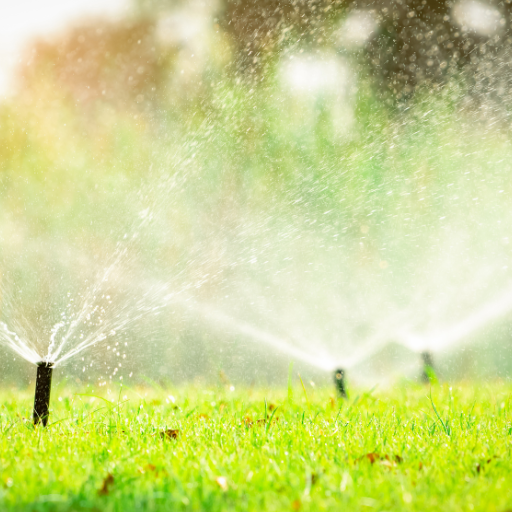
Over-fertilizing causes nutrient run-off, water pollution and lawn damage. Soil tests are important to prevent the problems above rather than simply assuming what nutrients your lawn may need and applying a general fertilizer program. Most importantly also, slow-release fertilizers can help reduce chances of nutrient overload by letting nutrients out slowly in the soil. Moreover, recommended rates of application and schedules should be adhered to for effective and sustainable use of fertilizers which might differ according to species of grass and local climate conditions. By being vigilant about your lawn growth patterns with respect to feeding it adequately with fertilizer when necessary then much less amount of excessive nutrient build-up can be avoided hence promising improved lawn environment.
The Best Lawn Care Programs
To establish the best lawn care programs, there are numerous highly regarded methodologies offered by top sources. Scotts, one of the most popular companies providing services in this sector offers a four-step comprehensive plan that involves applying pre-emergent herbicides and lawn food during spring; feeding early summer for growth spurts; turf hardening through late summer applications; roots strengthening through fall feedings before winter. Another reliable resource is The Home Depot which recommends making a unique model tailored on local climates, soil types as well as grass varieties that focuses on regular feeding programs, correct watering techniques and seasonal readjustments. A sustainable approach described by Integrated Pest Management (IPM) program from University Of California suggests mowing regularly, irrigating properly, basing fertilization on soil testing recommendations plus integrated pest management approaches towards reducing pesticide usage. These plans highlight how essential it is to have an organized routine that responds directly to individual lawns while maintaining a strong grassy ground-covered area.
Pros and Cons: Granular vs Liquid Fertilizer
Granular fertilizers and liquid fertilizers both have their own strengths and weaknesses that are important in terms of managing a lawn effectively. One major advantage of granular fertilizers is the fact that they use slow-release nutrients for long-term feeding. Usually, these nutrients are released slowly as a result of coated forms with controlled rates of dissolution, preventing nutrient leaching and thereby minimizing the need to apply them frequently at average intervals of 6-8 weeks. Moreover, when distributed using broadcast or drop spreaders, granular fertilizers can help create even nutrient levels across a yard.
By contrast, liquid fertilizers are lauded for their quick nutrition availability, which may be beneficial when one really needs to green up his/her lawn fast or instantly change the soil environment. Due to being soluble in nature, plant roots and leaves tend to absorb them faster than solid alternatives. They also come easy since they can be applied through hose-end sprayers as well as other liquid application tools while blending with various lawn treatments remains an option for them. However, this category may demand more frequent usage around every 2-3 weeks compared to the non-dissoluble counterparts.
Technical parameters such as Nitrogen (N), Phosphorus (P), and Potassium (K) ratio play a critical role in both types of fertilizer types mentioned above. Balanced or slow-release formulations like 14-14-14 or 19-5-9 are typical examples of granular ones designed for gradual release of nutrients into the medium, as opposed to liquid types having higher figures like 20-20-20 specifically meant for immediate nutrient uptake by plants in question instead. Therefore, based on the particular grass kind, expected time lapse between feedings & short-term food supply vs permanent one, it is important to know what each type represents, including its attributes regarding this type’s peculiarities and method-of-application, in order to choose between granular and liquid fertilizer.
How Often Should You Fertilize Your Lawn?
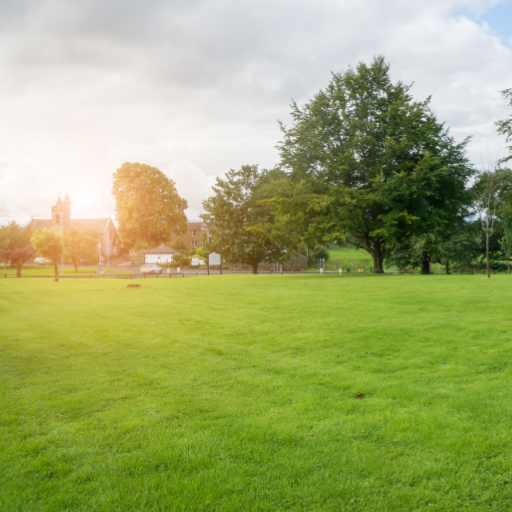
The frequency at which you should fertilize your lawn depends on the kind of grass, climate, and fertilizer. In general, it is advisable to fertilize lawns two to four times in a year. Warm season grasses like Bermuda or St Augustine need to be fertilized during their active growth period approximately every 6-8 weeks during spring and summer. The cool-season grasses are Kentucky bluegrass and fescues and these need fertilizer in early spring and again in late fall. Slow-release granular formulations can space out applications whereas the liquid forms may necessitate more frequent feeding about every 2-3 weeks. Following the right schedule for your type of grass as well as regional climate is important if you wish to have healthy lawns that grow vigorously.
The Viability of Seasonal Fertilizing Programs
After having been dormant during winter, it is important to apply a fertilizer in spring that promotes growth. For the warm-season grasses, this means fertilizing them in early spring with a balanced fertilizer normally having a ratio of 14-14-14. Also, when the soil temperature reaches about 55°F, cool-season turf grasses are usually applied with a higher nitrogen content such as 20-10-10.
For warm-season grasses, nitrogen fertilizer needs to be added every six to eight weeks throughout the summer to encourage vigorous growth. Cool-season grasses often require less summer-time fertilization, which may focus on lighter and slow-release formulations for health and resilience purposes.
During fall, fertilization is vital for cool-season grasses by supporting root development and preparing their lawns for winter dormancy. Use high-potassium fertilizers like 30-0-10, which give stronger roots and increased disease resistance. The warm-season grass species should also receive final fertilizations just before the first expected freeze date; this will enable them to store adequate amounts of nutrients required for them to survive the cold months.
Generally most types of lawn do not need winter feeding since their growth significantly slows down or stops completely. Nevertheless, where there are milder climates whereby warm-season grasses remain active in winter periods, small quantities of balanced fertilizers might be beneficial.’
Balancing the Fertilizer with Other Practices of Lawn Care
A properly balanced fertilizer and other lawn care practices would ensure a healthy, strong lawn that can handle various environmental stresses. Effective lawn care has many components such as mowing, watering, aeration and pest control.
Mowing: Mowing height is important to the health of the turfgrass. General recommendations indicate cool-season grasses should be maintained at 2.5-3.5 inches tall while warm-season grasses at 1-2 inches tall. Cutting over a third of the blade length during one cutting is stressful to plants and affects their ability to take in nutrients well.
Watering: Watering adequately varies with grass type. Often, lawns require about 1-1.5 inches of water per week either through rainfall or additional watering. Deep infrequent watering encourages deep rooting which enhances drought tolerance and nutrient uptake.
Aeration: Root growth is restricted by compacted soil and hampers nutrient uptake through roots. Aeration eases compaction by perforating cool-season grass lawns in autumn and warm-season ones in late spring. It entails punching small holes into soils allowing air, water and nutrients to penetrate for absorption by the roots.
Pest Control: Integrated Pest Management (IPM) strategies should be implemented alongside fertilization since they are inseparable issues. This involves monitoring pest populations and applying control measures only when necessary. Overuse of pesticides can eliminate beneficial organisms thereby causing resistance hence need for targeted applications based on pest life cycles.
It optimizes nutrient availability while promoting overall lawn health when these practices are balanced against appropriate fertilization schedules. For example, proper mowing height reduces stress thus improving applied fertilizer use in lawns as such situations may arise but not all times do we consider them . In addition, effective watering practices dissolve nutrients properly ensuring that they get carried down to the root zone as required here it is because nutrients are dissolved adequately and are transported to the root region by effective watering. Aeration before fertilization allows for better soil penetration and root access to nutrients, while judicious pest control helps maintain an environment where beneficial microbes can thrive, further supporting nutrient cycling and soil health.
Grass Growth and Health Monitoring
For this purpose, one needs to develop a systematic approach as well as keep observing and documenting it. Do visual inspections every week to notice signs of stress, nutrient deficiencies and diseases. Use a grass height gauge to ensure that mowing practices comply with species-specific recommendations which usually call for maintenance of grass blades between 2.5 and 3.5 inches for most common lawn grasses. Once a year, soil testing is essential for pH level monitoring and nutrient availability, which enables fine-tuning of fertilization and lime applications accordingly. Additionally, tracking climate changes helps so that the irrigation schedules are adjusted appropriately, thus avoiding both under-watering and over-watering circumstances due to drought or flood conditions, respectively. The use of disease resistant grass varieties plus applying soil amendments like compost enhances microbial activity and improves soil structure too. These factors are closely followed so as to maintain optimum turf health while proactively managing future problems.
Frequently Asked Questions (FAQs)
Q: Can you over-fertilize your lawn?
A: Yes, it is possible to over-fertilize your lawn. Applying too much fertilizer can lead to “fertilizer burn,” which damages grass by causing the roots to dry out due to excess nutrients.
Q: What happens if you over-fertilize your lawn?
A: If you over-fertilize your lawn, the grass may turn yellow or brown, become crispy, and die. This occurs because the excess nutrients can harm the grass roots, impairing their ability to absorb water and essential nutrients from the soil.
Q: How can you fix an over-fertilized lawn?
A: To fix an over-fertilized lawn, water your lawn deeply with at least an inch of water to help dilute and flush out the excess fertilizer. You should also avoid mowing your lawn until it shows signs of recovery.
Q: How much fertilizer do you need to apply to your lawn?
A: The amount of fertilizer you need to apply depends on several factors including the type of fertilizer, your lawn’s size, and its nutrient needs. It’s best to follow the manufacturer’s guidelines and consult a lawn care expert for tailored advice.
Q: Can too much nitrogen burn your lawn?
A: Yes, too much nitrogen can burn your lawn. When fertilizers contain high levels of nitrogen and you apply too much, it can lead to nutrient overload, known as “fertilizer burn,” damaging the grass blades and roots.
Q: Should you mow your lawn after fertilizing?
A: It’s generally recommended to wait a few days to mow after fertilizing your lawn. This allows the fertilizer to properly settle and be absorbed by the soil without being disturbed.
Q: How often should you fertilize your lawn?
A: The frequency with which you need to fertilize your lawn depends on the specific type of fertilizer you use and your lawn’s nutrient requirements. Normally, fertilizing two to four times a year is sufficient.
Q: What are some signs that you’ve over-fertilized your lawn?
A: Signs that you’ve over-fertilized your lawn include yellowing or browning grass, crispy or burnt-looking spots, and a sudden decline in grass health.






